¶ Map
The initial situation is:
- The aircraft is flying at heading 090° and 5000ft near EDTK Karlsruhe-Forchheim airport.
- The radio navigation VHF Omnidirectional Range (VOR) used is KARLSRUHE KRH 115.95 MHz
- The target is to intercept radial 330° outbound of KRH VOR (radial is the track coloured in pink and direction is the red arrow)
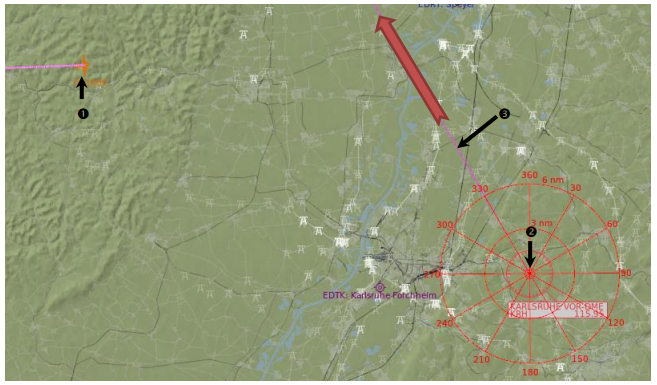
Pay attention that the aircraft must have an interception heading with the radial.
¶ Cockpit instruments
¶ Instrument descriptions
Please refer to the following page for more information on the cockpit instruments we are using:
¶ Tune the navigation instrument
In order to make the interception manoeuvre, you must tune in the correct frequency on the VOR receiver: 1. Tune navigation instrument using the VOR frequency 115.95 MHz 2. Set course (CRS) to 330° (wanted radial)
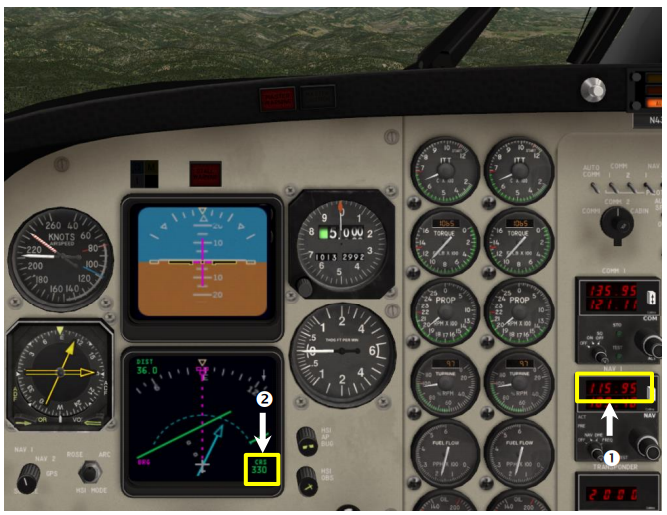
¶ Intercept and track a VOR radial
¶ Intercepting the VOR track
After the instrument tuning, you can follow the progress of interception following the needle on the RMI instrument.
- Progressively the needle of the RMI will turn toward the wanted course direction or the opposite course direction (course±180°).
- When you arrive in position close to the radial, the needle of the HSI instrument is moving towards the centre.
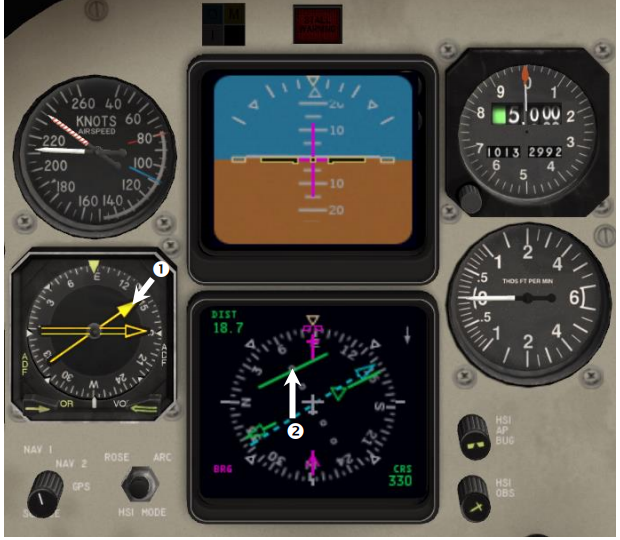
If you don't know the distance from the beacon, do not anticipate interception turn or you can intercept the VOR radial very far from your position.
For efficient radial interception, we advise to cross the radial first.
¶ Radial Crossing
With maintaining heading, you will normally cross the radial.
- The needle on the RMI instrument shall point to the VOR course or opposite course direction (course±180°). The needle points toward the beacon.
- The needle on the HSI instrument is centred
- Note the TO/FROM indicator which points toward the beacon (green triangle)
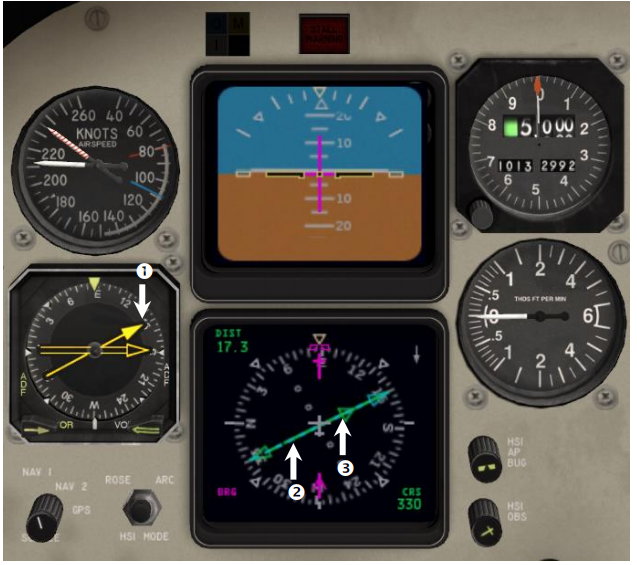
At this time, if you want to follow radial 330° outbound the VOR, you shall turn your aircraft to 330° heading.
For information, if you want to follow radial 330° inbound, you shall turn your aircraft to 150° heading.
¶ Turn for interception and establishment of the radial
Now we want to follow the radial 330° outbound the VOR:
- We will turn to heading 330°.
- But as we were already on the radial but not at the right heading to follow it, we will overshoot the radial. So we need to go back to the radial in order to intercept it again.
- Then we will add or remove 30° to our heading in order to intercept the radial using the usual 30° interception course. If the aircraft turns clockwise (to the right), just add 30° to the course, or if the aircraft turns anti-clockwise (to the left) just remove 30° of the wanted heading
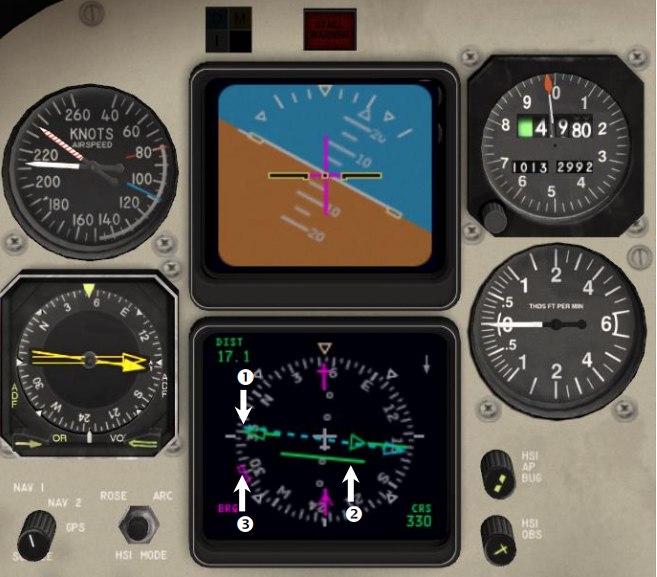
¶ Reaching the course heading
Now, you start the turn to intercept the radial smoother using 30° interception angle.
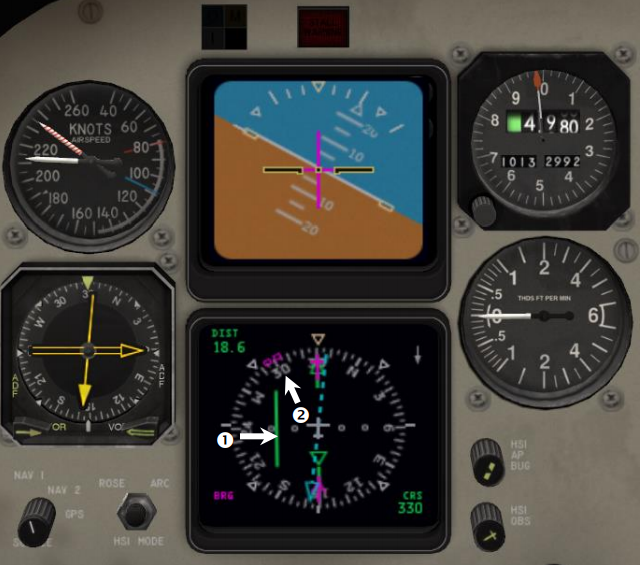
This figure shows:
- The radial is far from interception if we maintain the heading at course value (330°)
- We need a 30° interception heading (here 330°-30° =300°) in order to re-intercept
A lower angle will impose a late interception or non-possible interception when facing heavy crosswinds.
A higher angle will create another overshoot and another interception cycle.
¶ At interception heading
When you are at interception heading, you will intercept again the radial but with a lower angle:
- As you are on the interception angle, you must see that the needle is going to the centre of the HSI.
- When the needle of HSI is just near to the centre, it is time to turn the aircraft onto the radial.
- Turn to heading
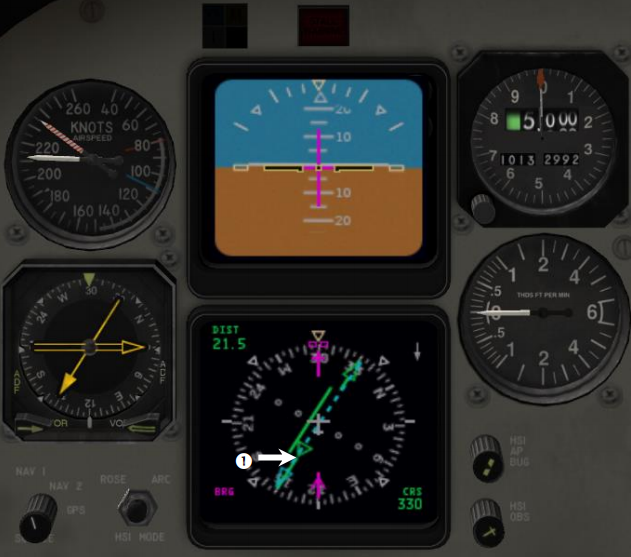
The exact instant for the last turn is sometimes difficult to know.
If you are close to VOR (DME<40NM), then you can initiate the turn when the needle reaches ½ dot deviation.
If the distance is higher, you must wait until the needle is near to the centre.
¶ Following the VOR radial
In this picture, you can see that radial 330 of the wanted VOR is intercepted and you start to follow this radial:
- The RMI instrument points toward the beacon. As we fly outbound VOR, the RMI shall point to the south like the image.
- Needle in HSI instrument is centred and the heading is the wanted course (330°) as we fly outbound.
- The TO/FROM indicator on the HSI shows FROM as we follow the radial outbound.
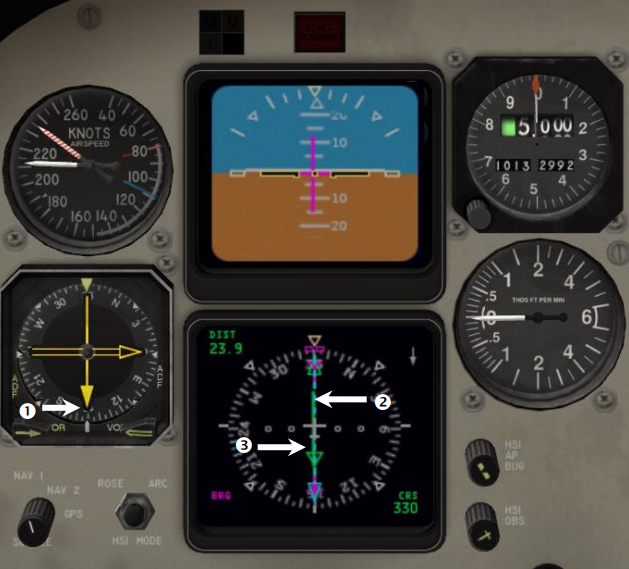
When following the radial, you must take into account the crosswind effect. The heading shall be adjusted as necessary in order to keep the needle of the HSI centred.
- None
- VID 150259 - Creation
- VID 200696 - Update
- VID 496402 - Wiki.js integration